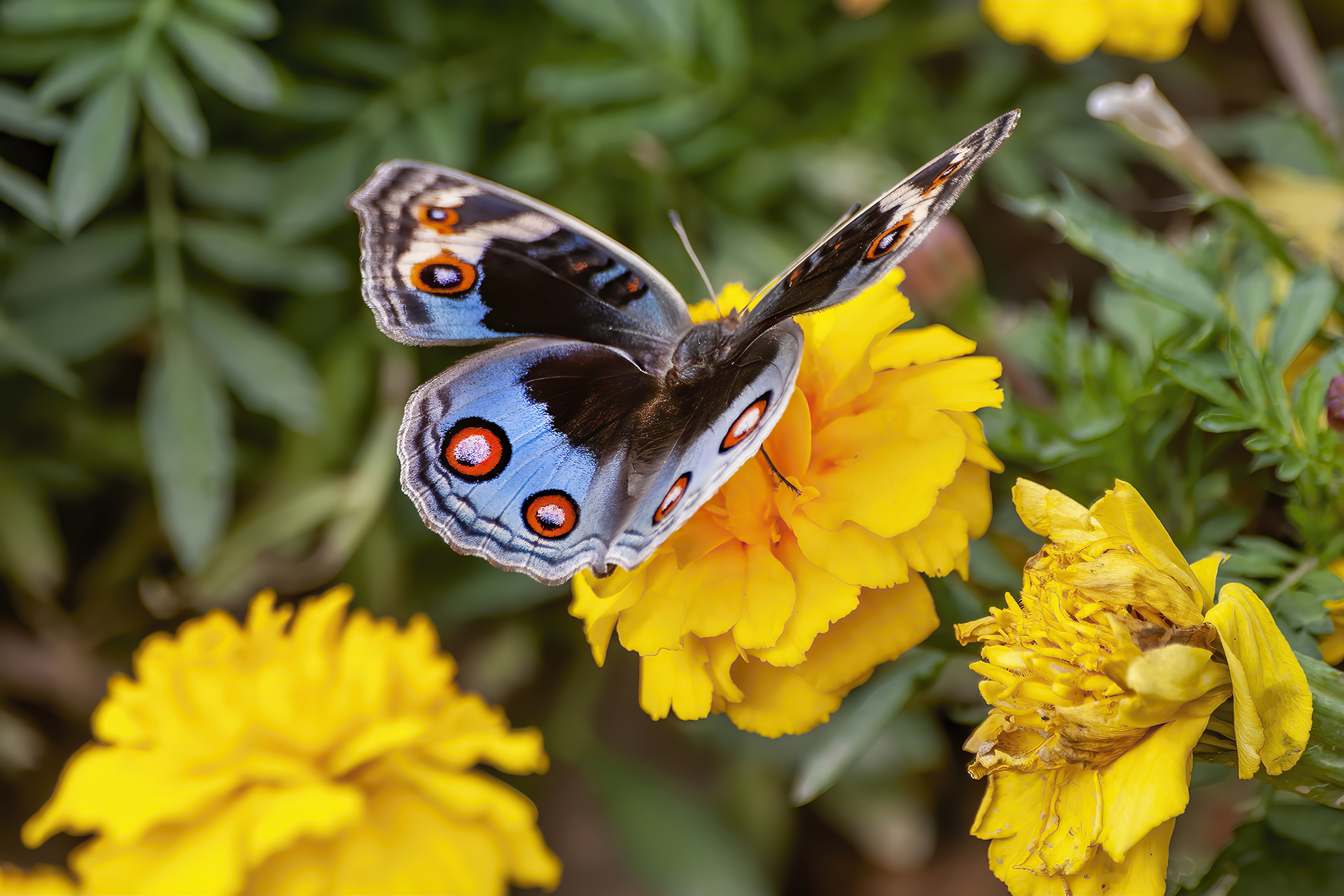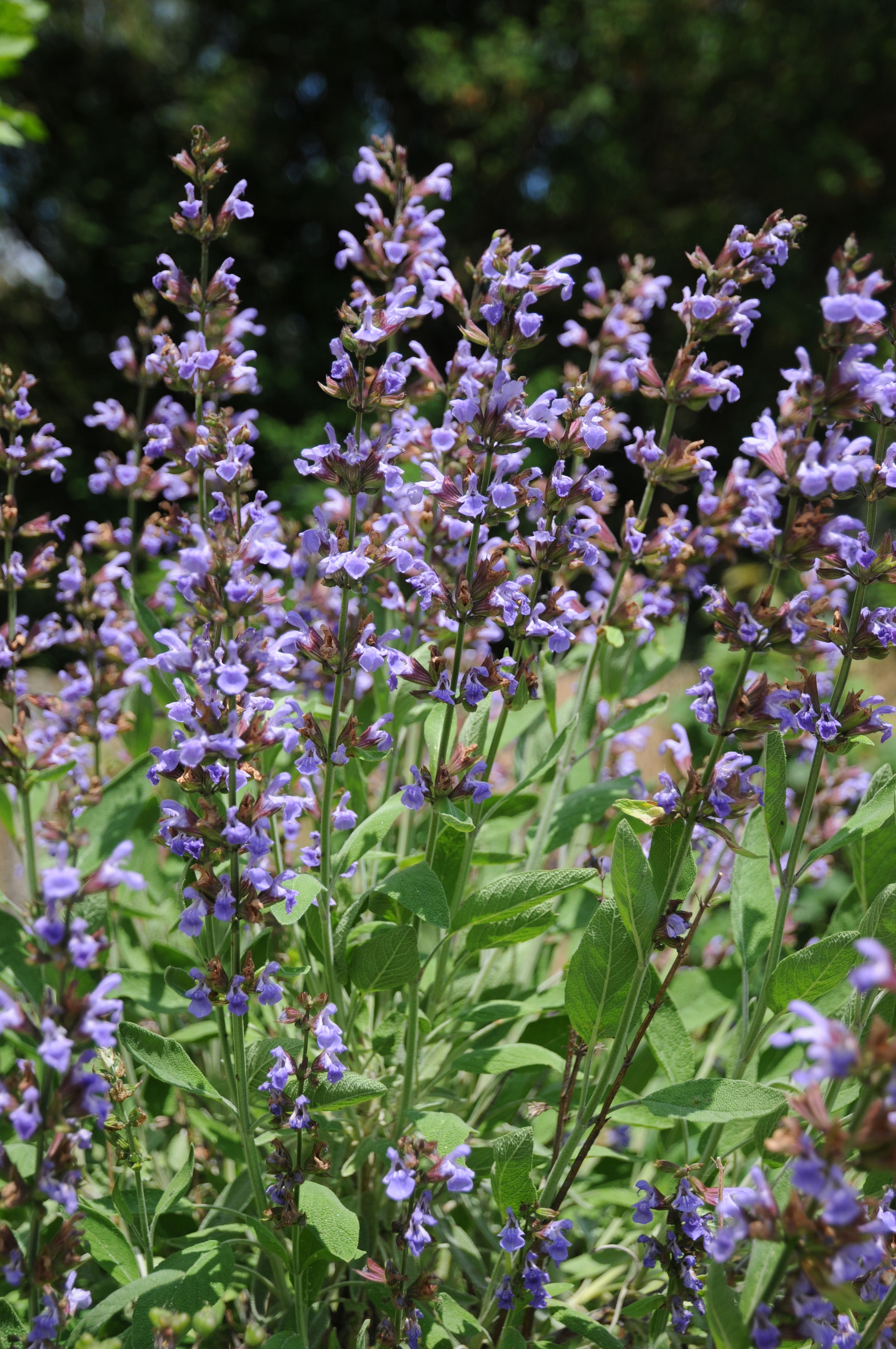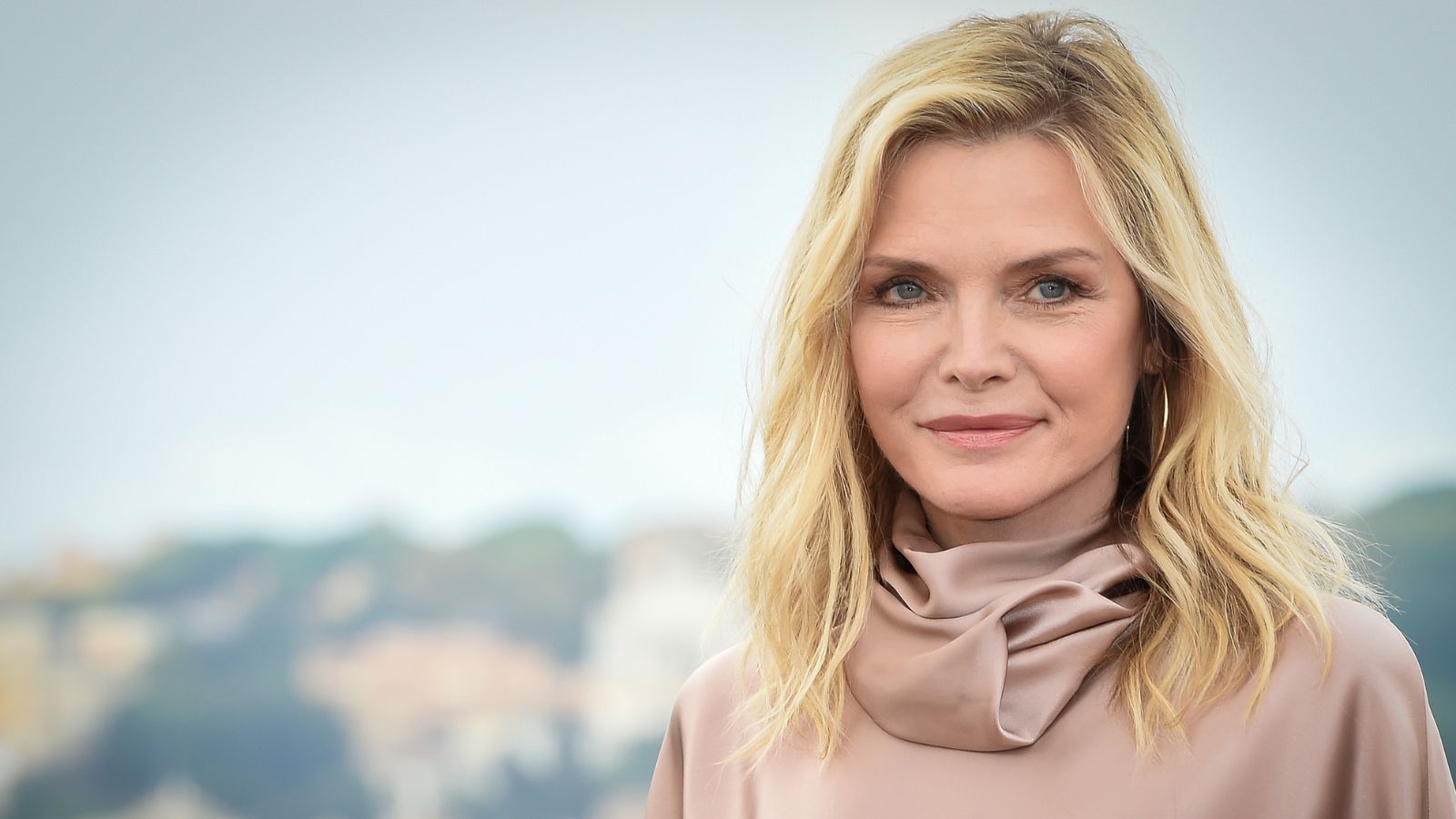Best fly repellent plants – 10 plants to keep pests away
These fly repellent plants will help keep your home and yard pest free, enabling you enjoy life outside amidst beautiful plants


Fed up with pesky flies both in your yard and home? Well, these fly repellent plants will deter them naturally, thanks to their powerful oils and natural fragrance.
No surprise, many of these bug busting beauties are suitable as herb garden ideas, long prized for their medicinal and culinary qualities. Fortunately, they are also rather beautiful, smell rather delicious to us and, above all, are pretty easy to grow given the right conditions.
They won't just help deter flies in the backyard, pot them up around your doorways and they will help keep flies out of the house, too.
We’ve put together the best fly repellent plants, so you can reap the benefits and – above all - enjoy a restful and uninterrupted time outside.
Best fly-repellent plants
These fly-repellent plants won't just see of flies; many make great mosquito-repellent plants and wasp-repellent plants, too. So, if you are bothered by flying insects all summer long, put in these plants, especially around your outdoor dining spaces.
1. Nasturtiums

Well known as an easy-to-grow companion plant, nasturtiums will not only fill your yard with hot and spicy edible blooms but also help keep it fly free too. Thanks to the high concentration of naturally occurring myristicin and limonene in the leaves and flowers, flies simply can’t handle the sharp, slightly bitter scent and choose to stay well clear.
Make the most of this amazing colorful plant and grow nasturtium en masse in pots, planters and window boxes, letting it trail and twine for a dazzling display. It will readily self seed, then die back before growing again the following spring.
Grows to 8ft (2.5m) high and is hardy down to 23 – 34F (-5-1C).
2. Marigolds

Both French and American marigolds possess a strong spicy scent and tightly ruffled red, yellow and orange blooms that keep flies well away.
‘These bright, lovely flowers look innocent, but marigolds’ roots grow deeply and aggressively,’ says the team at Mo Plants. ‘These sturdy roots are the real repellents. They emit a strong odor that reaches deep into the soil.’
A tender annual these readily available plants are happiest in sun and will thrive during the warmer months across UDSA Zones 2-11. You can grow marigolds from seed, and keep them flowering – and repelling wasps – for longer by deadheading regularly. If you want to attract butterflies, these make a great choice, too.
3. Petunias

Bright and blowsy, these sun loving annuals can be seen happily growing in all manner of containers – they make for some of the best plants for hanging baskets, window pots and large-scale planters.
Recognized for their vibrant trumpet shaped blooms and vivid green leaves, they possess insect repelling capabilities too. Although there’s much debate as to what exactly causes flies and other insects to give this plant a wide berth, it could be down to the hairy and sticky stems and leaves, which prove a deadly trap for most small bugs.
Petunias prefer moist but well drained soil in a sunny spot. Flowering from June to October they are tender, so will perish at the first sign of frost. Deadhead petunias to keep them blooming for longer.
4. Lavender

Divine in both looks and fragrance, did you know that lavender is also brilliant at keeping flies and many other pesky insects at bay?
Thanks to the high concentration of linalool in the plant’s natural oil, it is simply too strong for flies, fleas, mosquitoes to handle, overloading their sensitive olfactory organs. As a result, they stay well clear, leaving us to enjoy the heady scent and gorgeous sight of these tiny mauve blooms swaying above the silvery-green leaves.
Depending on your HDSA Zone you can take your pick from the many different varieties. French lavender is less hardy preferring temperatures above 10℉ (-12℃) while the smaller English varieties can cope with a brisk -12F (-29C). It's easy to grow lavender in borders and containers.
‘Harvest the flowers in order to help keep bugs out of your home. It’s at its best when the flowers are just opening and at their most colorful,’ advises the experts at Perfect Plants. It’s also worth pruning lavender straight after flowering to promote fresh new growth.
5. Rosemary

Despite hailing from warm, Mediterranean climes this distinctive culinary herb is pretty tough, and thanks to its delicious woody scent, is excellent at keeping flies away.
Hardy down to Zone 6 -20 F. (-29 C.) you can grow rosemary happily in full sun and free draining soil. Covered in tiny purple flowers in early spring and summer, it looks stunning too and is a real nectar rich magnet for bees.
Clip back every spring to promote fresh new growth, as it’s these that shoots are packed with the strongest concentration of oils, resulting in the most potent flavor and fragrance.
Whilst mostly hardy it may lose some leaves during the winter, unless protected, but the plant should reshoot in spring. Avoid letting soil become waterlogged though as this is rosemary’s number one pet hate.
6. Basil

You can grow basil from seed, indoors and out. It's best sown at regular intervals throughout spring and summer, this tender annual herb has a strong smell that we find inviting yet flies and many other insects really can’t stand.
It requires constant heat to grow and dislikes sitting in wet compost, where if left it will quickly rot. The soft and tasty leaves also scorch very easily so make sure your crop is positioned out of direct sun.
Harvest individual leaves by picking them off, rather snipping several plants with scissors, as this will promote fresh, new growth.
And learn how to prune basil at the right time to prolong its life. The team at Fiskars suggest, ‘You can also pinch off flowering stems 1 inch below the flower to keep the plant from producing seeds and becoming bitter.’
7. Mint

Fabulous in food and drink, most gardeners love to grow mint. Adored by most but hated by flies and wasps, fresh mint is hard to beat for sheer summer charm. Sun and part shade loving, there are many different varieties to grow, each with their own distinct flavor and fragrance.
Peppermint and spearmint are two of the strongest scented mints so are well worth growing to keep flies at bay.
These herbs will shoot in spring, to reach around 3ft (1m) before dying back to ground level in fall. For the best results cut stems back to 2 inches (5cm) after flowering and keep container grown plants well watered.
The expert team at Crocus has this warning: ‘Initially upright, the stems become lax as they grow, and begin to root where they touch the ground, so in time large clumps will be formed. If you prefer to keep them under control, they are best planted in large pots or containers.’
8. Garlic

As with onions and alliums, garlic contains high quantities of sulfonic acid which gives off a strong smell that flies simply don’t like.
You can grow garlic primarily for culinary and medicinal use, but these bulbs also have fairly attractive flowers which are particularly tasty sauteed or added to salads. Known as scapes, these white spherical blooms can be picked at bud stage or when they are fully open.
Find out when to plant garlic in your zone for best growing results, and how to store garlic to keep it fresh for cooking.
9. Common sage

A upright perennial with gorgeous, green-grey leaves, Sage is useful not just for cooking but for keeping pesky bugs and flies at bay. Pretty fast-growing, provided it is in well-draining but moist soil, it looks stunning planted amongst flowers and shrubs in a border or in a large planter next to the patio.
The musky scent and flavor are at their strongest when the leaves are crushed, but you can also snip off stems and toss them onto the grill or backyard fire pit to release the oils, creating a natural insect repellent.
Blue-purple flowers appear in early summer and are hugely attractive to bees and other pollinators. These plants are very hardy and tend to reshoot in spring, even after a harsh winter but are best replaced every three or four years as they can become tired and woody.
10. Lemon balm

Thanks to the citronellal in its leaves, this strong, citrus scented herb is highly effective at repelling pesky flies.
Grow a pot on your kitchen window or plant a patch of this perennial aromatic herb just outside the back door and get set to enjoy a fly free home.
A member of the mint family, the crinkly green leaves can be dried and used in tea or added to stews and soups. They also have medicinal properties, helping to reduce stress, relieve toothache and cold sores.
Just like mint however it is a prolific grower – so best to grow it as a container gardening idea otherwise it’s likely to stage a garden takeover bid.
Which smells keep flies away?
Many strong natural scents such as lavender, eucalyptus, mint and lemongrass are too overpowering for many insects, including pesky flies, so they will stay well away. Plant these attractive varieties – many of which are prized for their culinary and medicinal qualities – around your patio and at entry points to your home, to keep it fly free.
Do plants get rid of flies?
There are a few aromatic plants that are known to deter flies, and many happen to be rather beautiful too. Petunias, lavender, marigolds and nasturtiums all possess this extraordinary power but there are also a few leafy beauties that can attract and devour these pesky bugs.
Sarracenia – also known as the Pitcher Plant – entices the insects down into their long tubular flowers with a sweet nectar where they then get trapped and digested, nourishing the plant at the same time.
The jaw-like leaves of the venus flytrap snap shut when the spines are brushed by unsuspecting flies attracted by the sweet nectar inside.
There are over 152 plant species of Sundew and they are all happy to feast on pesky bugs and flies. Widely found in tropical and temperate regions, they produce white pink rosette flowers that are covered in sticky plant hairs that both attract, entrap and digest their prey.
Sign up to the Homes & Gardens newsletter
Design expertise in your inbox – from inspiring decorating ideas and beautiful celebrity homes to practical gardening advice and shopping round-ups.

Journalist Jill Morgan has spent over 20 years writing and editing gardening, interior and property features. Titles she has worked on include The English Home, House Beautiful, Ideal Home, Houzz and Modern Gardens and she writes regularly for H&G as a Contributing Editor. Whilst she is a dab hand at renovation projects and DIY, she is happiest when out digging in the garden or planning a new border.
-
 Orange and green is the bold color pairing quietly transforming homes in 2025 – here's 4 reasons why
Orange and green is the bold color pairing quietly transforming homes in 2025 – here's 4 reasons whyInterior designers are making the orange and green combination work wonders – this is how you can too
By Sophia Pouget de St Victor Published
-
 This Michelle-Pfeiffer-approved chair is made of a forebodingly unusual material, opening the debate: Is it a rustic stunner, or a danger to sitters?
This Michelle-Pfeiffer-approved chair is made of a forebodingly unusual material, opening the debate: Is it a rustic stunner, or a danger to sitters?The actress took to Instagram with a chair made of a controversially sharp material – and fans are unsure of how they feel about it
By Sophie Edwards Published